We now have the exit plan. It may not be quite what we were expecting but at least we have it. Three dates to remember:
March 29 Stay at home order ends; outdoor gatherings permitted (rule of 6/2 households max)
April 12 Beer gardens and outdoor attractions open
May 17 Hotels and indoor attractions open
This means that we are now taking bookings from May 17 onwards.
A word of caution: as we start to process itineraries, we have noticed hotels becoming booked very quickly. As overseas travel remains restricted, there will be more demand for UK holidays. So best to book early.
Reading Festival is to go ahead as usual on August 27-29. This takes place in the meadows by the Thames as you walk (downstream) to Caversham Bridge. The Path should be unaffected except at night. But it will be busy in Reading and surrounding areas that weekend.
Staying in Reading, the Beer and Cider Festival, which normally takes place in May in Christchurch Meadows just across the river from the Path, is to be postponed to a later date – to be announced.
There will be a series of talks on Turner in April entitled Turner’s Sandycombe Years. Turner lived for some years in Sandycombe Lodge, a few minutes walk from the Thames Path. For more details, see here.
Our next online event will be the usual time of 7pm on Thursday March 11. We will be exploring the Thames Path from Lechlade to Oxford. Click on the link to register.
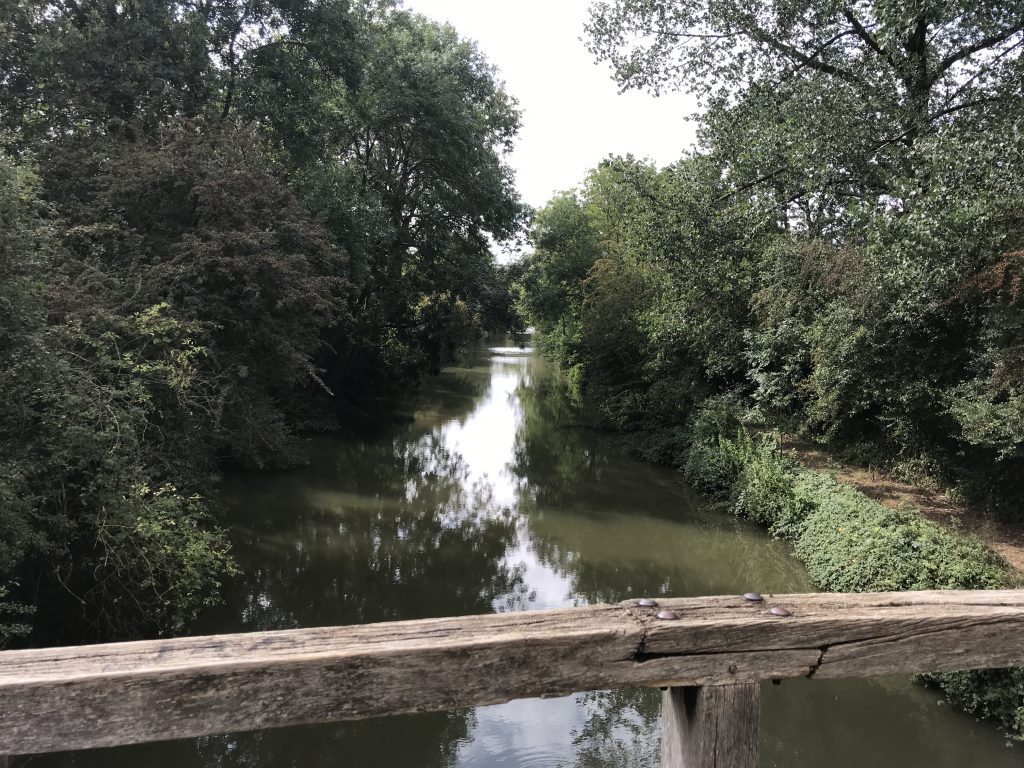
The bridge at Benson Lock has been repaired so you can now walk from Benson to Wallingford without interruption.
Hammerton’s ferry at Twickenham will be opening from March 1. The ferry shuttles foot passengers between Ham House on the right bank to Marble Hill Park on the left. This is the first time the family-run ferry will operate without “Captain” Francis Spencer at the helm, who sadly died earlier this year.
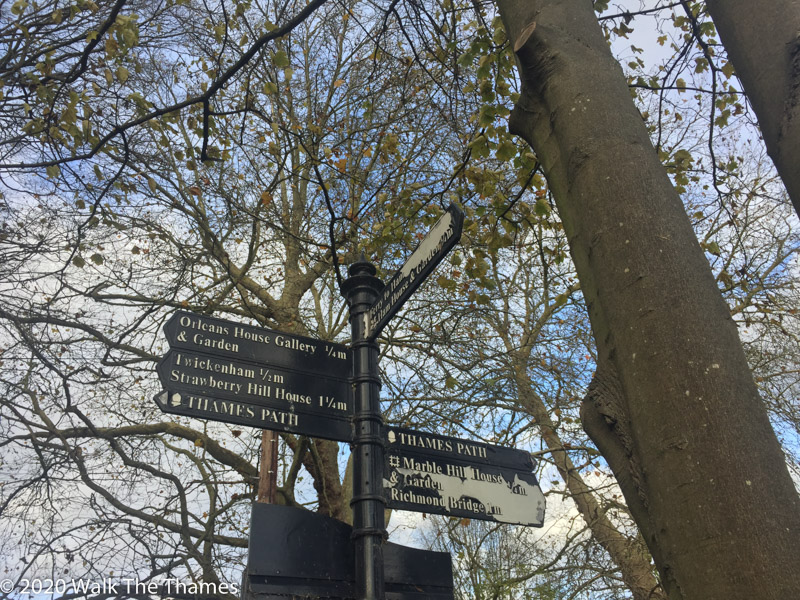
We are continuing our “Walking from Home” series. Last week we reached Caversham Bridge. This week we will momentarily divert away from the Path into Reading town centre.
Caversham Bridge marks the western end of Reading town centre with Reading Bridge very much in the centre, a half mile further. The Thames Path follows the river between the two bridges on the right bank. In fact, you can just as easily walk on the left bank (on the Caversham side of the river). A footbridge, Christchurch Bridge, was built in 2015. Quite why remains a mystery as it is a 2 minute walk from Reading Bridge. Fry’s Island sits in between the bridges and is home to Caversham Boat Services and a private house.
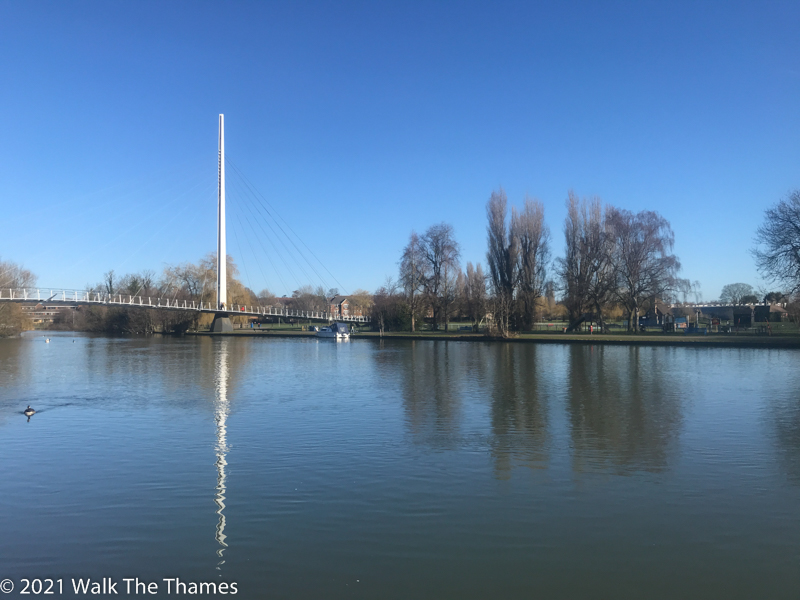
At Reading Bridge you will immediately notice the tall office blocks that dominate the skyline: SSE, Thames Water, Prudential. These have taken over from the traditional 3B’s of Reading: Biscuits, Brewing and Bulbs. More to follow!
The Thames Path, naturally, follows the river into Kings Meadow and Caversham Lock. We are not going to do that as we will walk into Reading and rejoin the river further downstream at its confluence with the Kennet River. But before we set off there are two places you may be interested in just a few yards down.
One is Whittington’s Tea Barge. Yes, it’s a barge that serves tea and coffee – although only open at weekends. It’s located on the other side of the river so you will have to cross Reading Bridge to get to it.
The other is the Thames Lido which lies about 100 yards from the bridge on the Thames Path. This is an old open air swimming pool that has recently been tastefully restored to its former glory. The pool, though heated, is a little colder than you would expect from a normal pool. There are private changing cubicles and you don’t need to book in advance. There’s also a bar and restaurant.
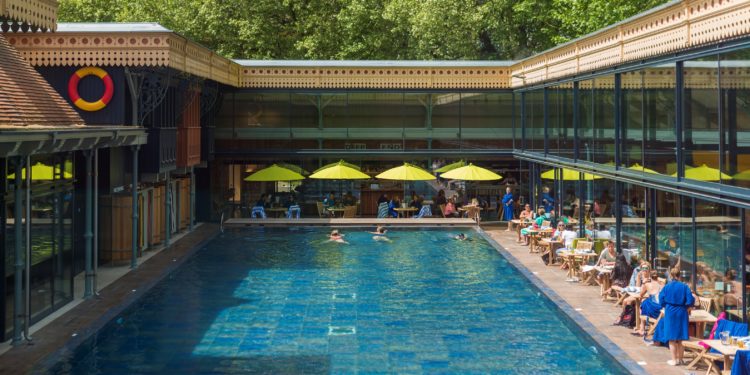
So, into Reading. Our route, which you can follow in black on the map below, takes us from Reading Bridge, under the Great Western Railway with the station to our right. Reading is an important railway junction. It sits on the Great Western Railway with fast trains to London Paddington, Bristol, South Wales and Cornwall. It was redeveloped in 2015 to handle increased capacity from the impending Crossrail.

After crossing underneath the railway bridge we arrive at Forbury Gardens on our left. The enormous lion is the Maiwand Lion, erected to commemorate the loss of nearly 300 soldiers from the Royal Berkshire Regiment near Kandahar, Afghanistan in 1880.
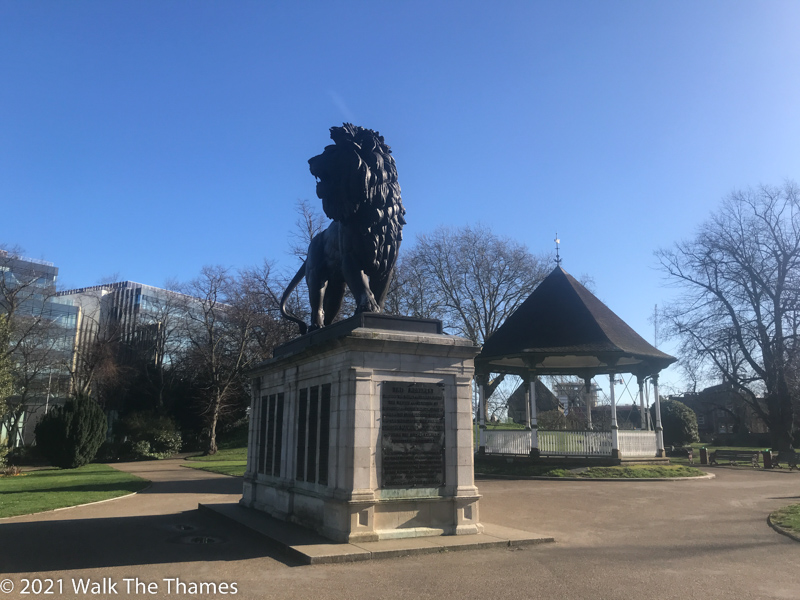
Further up on our right is St Lawrence Church, one of three Parish churches in Reading. Next to the church is the Hospitium of St John the Baptist. This was a dormitory for pilgrims visiting the Abbey. In 1485 the building was taken over by the Abbey school, becoming the Royal Grammar School, now simply known as Reading School. Today it’s a childcare facility run by the co-op.
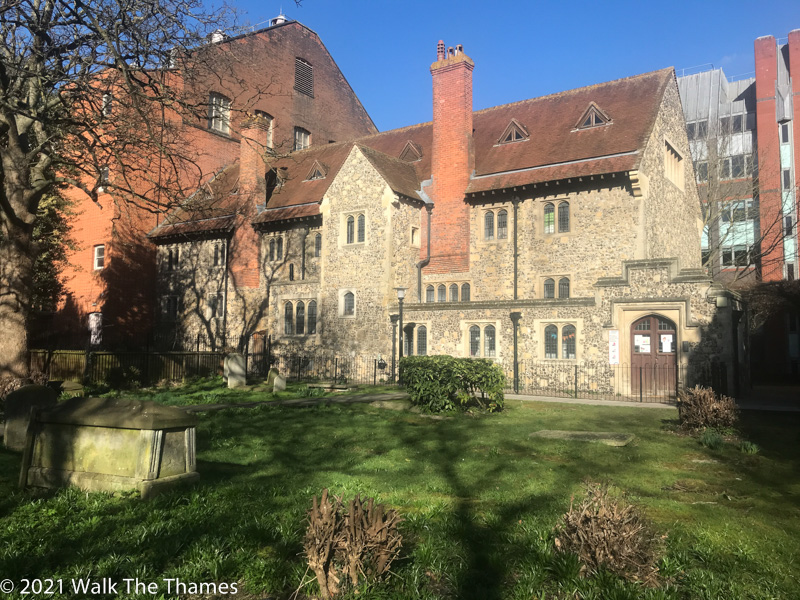
Past St Lawrence, we arrive at Town Hall Square, the Town Hall being on our right facing Blagrave Street. This fine Grade II listed building hosts Reading Museum which, hopefully, we will be able to visit soon.
We then head south and downhill through Market Place towards the Kennet Canal. At the junction with Kings Road is a prominent building, Jacksons. Since 1875 this had been a department store but sadly closed in 2013. Up until its closure it continued to operate a network of pneumatic tubes to transport cash and receipts around the building
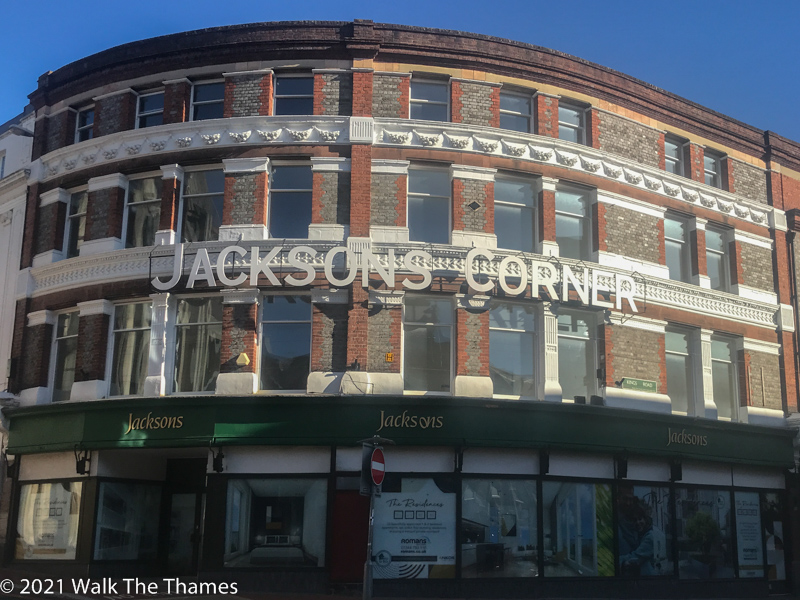
A few yards past Jacksons Corner we meet the Kennet River. To our right is the Oracle shopping centre with a series of riverside restaurants. Facing us across the busy A329 is the Great Expectations Hotel, one of our accommodation partners (bronze package). It is said that Charles Dickens used to frequent here. A very vivid mural from 1990 celebrates the anti-apartheid protests.
We follow the Kennet Canal/River to our left which will, not too far away, join the Thames. The river passes by a mixture of old and new houses – very peaceful in lockdown. A branch of the Kennet turns to the left, passing under Kings Road, and we are fortunate to be able to follow this branch, yielding a spectacular view of Reading Abbey and Reading Gaol.
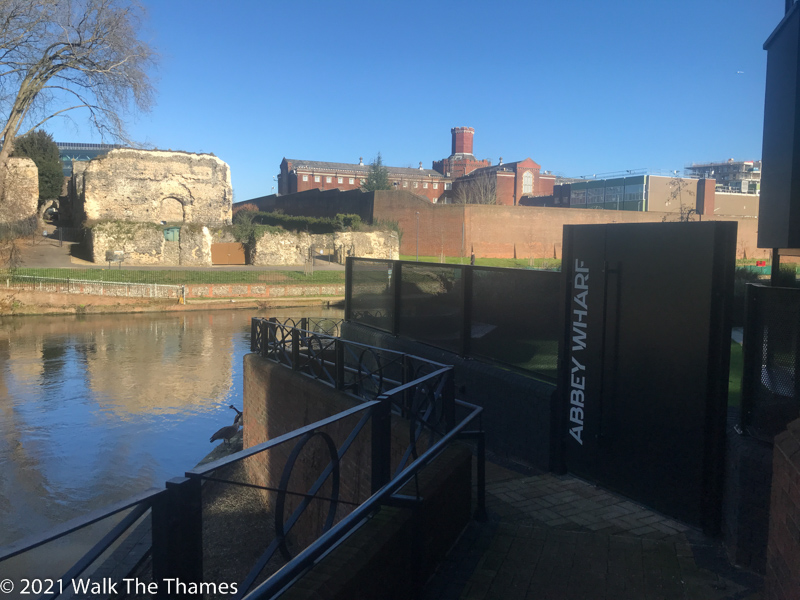
Reading Abbey was founded by Henry I, fourth son of William the Conqueror, in 1121. It was one of Europe’s largest monasteries. Although mostly now in ruins, some of the walls of the ancillary buildings remain. The nave of the church has all but gone except for what must be the eastern end. The Abbey held the hand of St James, which is now at St Peter’s Church, Marlow.
Henry I was buried here in 1135 although it is not known precisely where. In 1359, the Abbey held the wedding of John of Gaunt with Blanche, daughter of the Duke of Lancaster, who was from Kempsford, further up the Thames Path.
Sadly, as with most others, it fell to ruin following the dissolution of the monasteries. The last Abbot was Hugh Faringdon who was hung, drawn and quartered after failing to surrender the Abbey. A local school, Blessed Hugh Faringdon, is named after him.
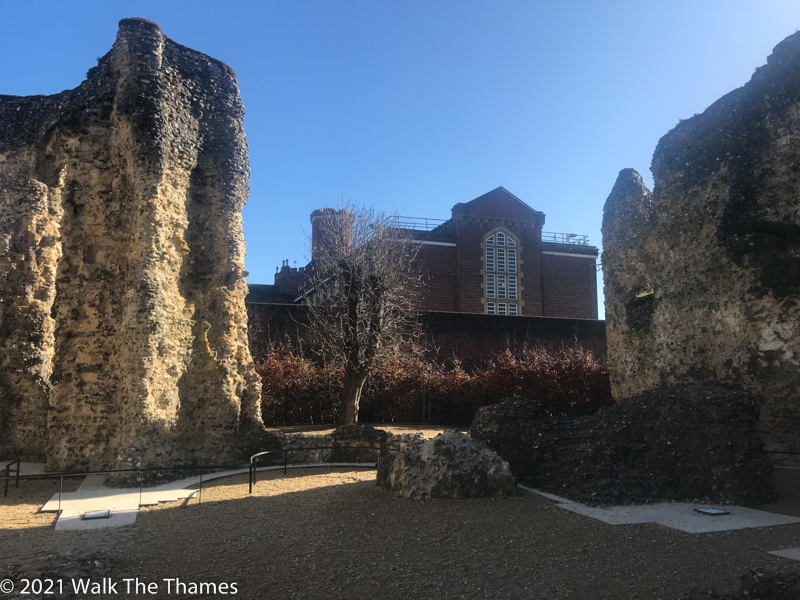
The north end of the Abbey adjoins Forbury Gardens – which we were in earlier. If you turn left and walk through the gardens you come to Abbey Gateway. This was the original entrance to the Abbey, at the western end of the nave. It was restored in 1861 which is why it looks so out of place from the rest of the ruins. The adjoining buildings became home to the Reading Ladies Boarding School which was attended by Jane Austen. It is now known as The Abbey School.
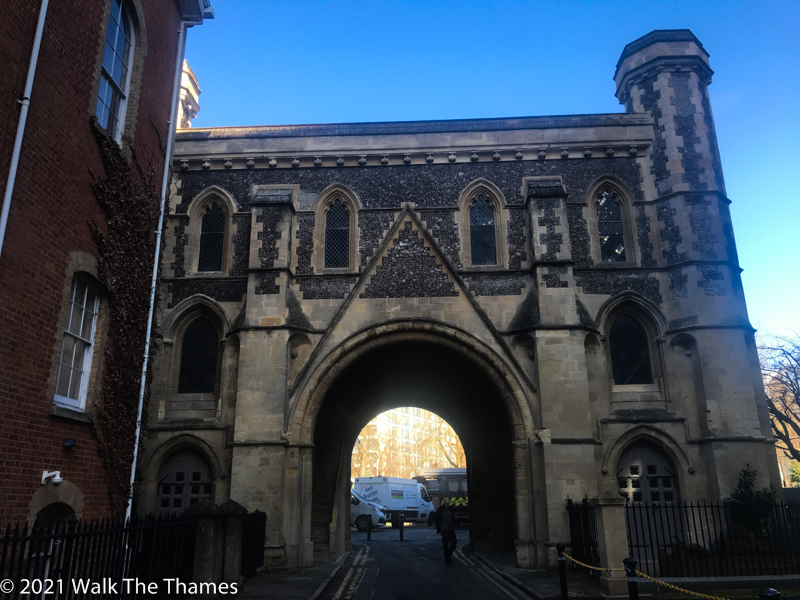
Adjoining the Abbey is Reading Gaol. It was built in 1844 to a design by George Gilbert Scott, who also designed Clifton Hampden Bridge. It is unfortunate that the original building can barely be seen as it is surrounded by a high wall. The Gaol, of course, housed Oscar Wilde who wrote his famous ballad here. There is a rather cheap silhouette statue of him on a walkway named after him. Surely he’s worth more than that? The prison closed in 2014 and is currently up for sale. A campaign is underway to use the site for an arts and culture hub instead of turning it into flats.
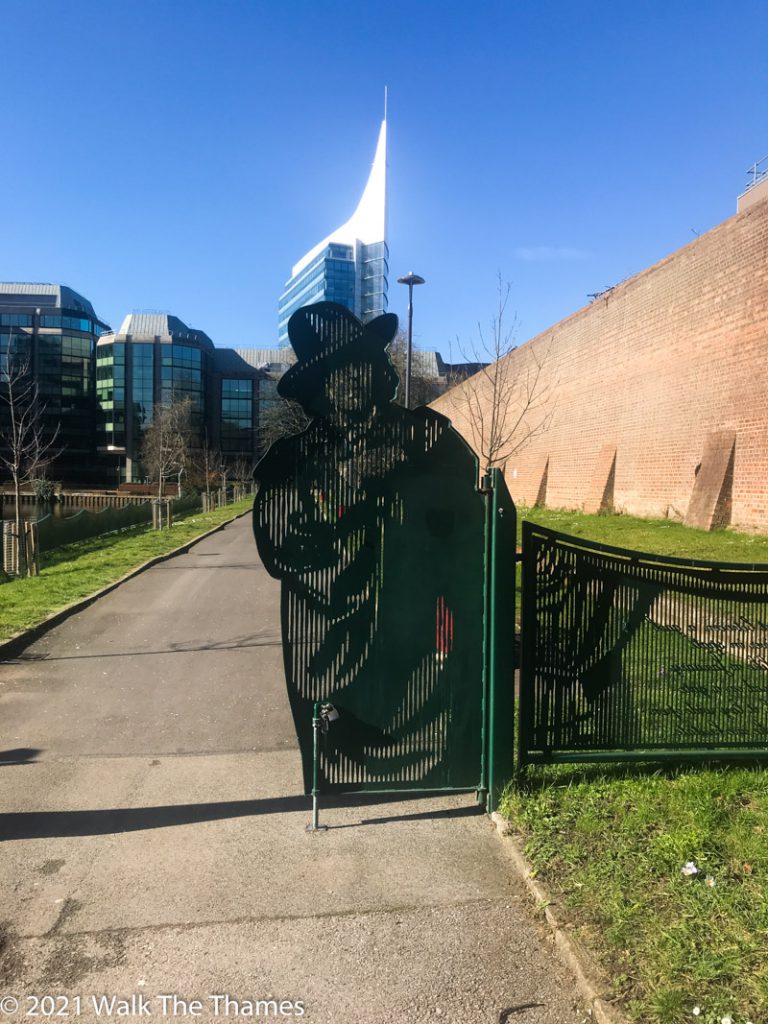
Back on the Kennet, we walk eastwards through what would have been, in its time, docks and warehouses. These have just about all been replaced (not converted) by modern flats.
Very few of the original buildings remain. But a notable exception is at Blake’s Lock, where Bel & the Dragon, a hotel and restaurant, occupies part of the old Huntley & Palmer biscuit factory, one of the three B’s. Aside from the fact that it boasts a superb restaurant, it’s a fabulous hotel and is part of our “silver package”. The hotel is, of course, closed at the moment, as is the building next door: Blakes Lock Museum, part of Reading Museum.
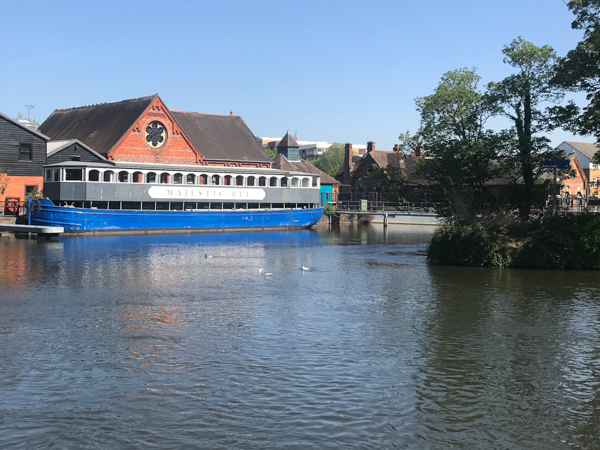
You can walk on either side of the Kennet, both sides lined with houses. If on the left hand side you are forced onto the right bank just before a huge gas holder which is to, sadly, be pulled down for more flats. Across the bridge is the Jolly Anglers, a thriving riverside pub in non-Covid times.
It’s just a few yards now as we pass under two railway bridges: the first being the line to London Waterloo, the second going to Paddington. We have now arrived back at the Thames, having gained a lot but missed little, ready to continue our walk towards Sonning.
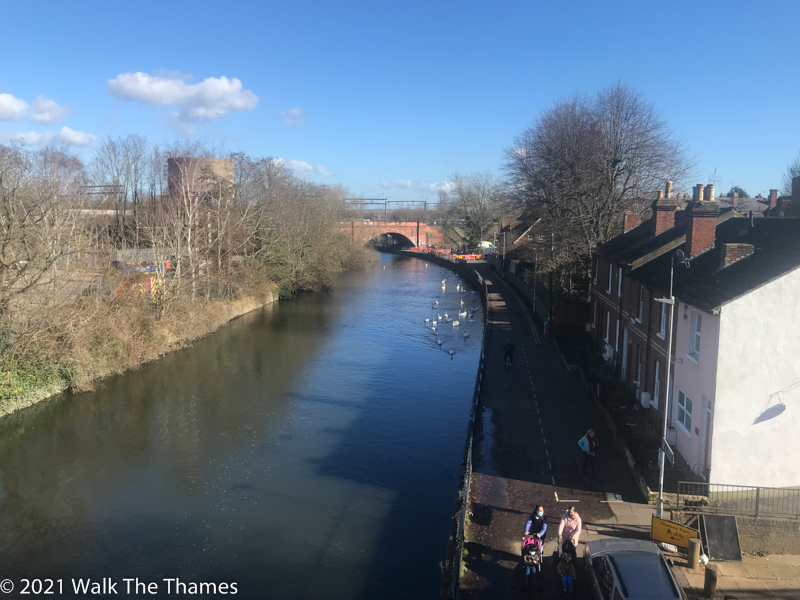
Until next week…
Ready to book?
| Cookie | Duration | Description |
|---|---|---|
| cookielawinfo-checkbox-analytics | 11 months | This cookie is set by GDPR Cookie Consent plugin. The cookie is used to store the user consent for the cookies in the category "Analytics". |
| cookielawinfo-checkbox-functional | 11 months | The cookie is set by GDPR cookie consent to record the user consent for the cookies in the category "Functional". |
| cookielawinfo-checkbox-necessary | 11 months | This cookie is set by GDPR Cookie Consent plugin. The cookies is used to store the user consent for the cookies in the category "Necessary". |
| cookielawinfo-checkbox-others | 11 months | This cookie is set by GDPR Cookie Consent plugin. The cookie is used to store the user consent for the cookies in the category "Other. |
| cookielawinfo-checkbox-performance | 11 months | This cookie is set by GDPR Cookie Consent plugin. The cookie is used to store the user consent for the cookies in the category "Performance". |
| viewed_cookie_policy | 11 months | The cookie is set by the GDPR Cookie Consent plugin and is used to store whether or not user has consented to the use of cookies. It does not store any personal data. |